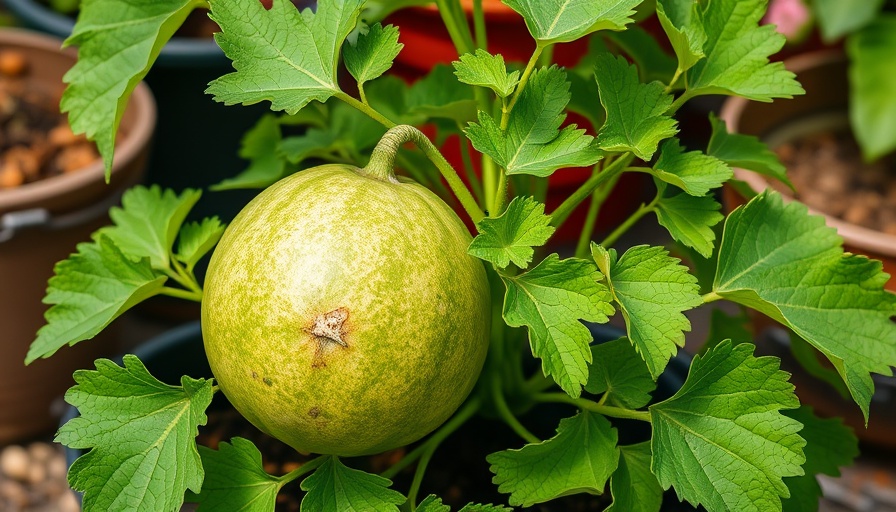
Unlocking the Joy of Cantaloupe Cultivation
No matter the size of your outdoor space, growing delicious cantaloupe is achievable—and a rewarding venture at that! These sweet melons, belonging to the Cucurbitaceae family, can be easily cultivated in containers, allowing aspiring gardeners to enjoy fresh produce even in urban environments or limited backyard spaces. This article will guide you through the essential steps to successfully grow cantaloupe in pots, enabling you to savor the flavors of homegrown fruits.
Why Container Gardening is a Game-Changer
Container gardening offers numerous benefits, particularly for those with restricted outdoor areas. Not only does it eliminate the need for a traditional garden bed, but it offers flexibility in managing growing conditions. The ability to move pots indoors during unpredictable weather or extreme temperatures is particularly advantageous. For example, cold-climate gardeners can start their melons indoors or in greenhouses before transitioning them outdoors, while those in scorching regions can relocate plants to shady areas when needed.
Choosing the Right Container
When selecting a container for your cantaloupe, opt for something that is at least 5 to 10 gallons in size, as this provides sufficient space for the roots to thrive. Look for materials that retain warmth but allow for drainage, such as terracotta or plastic. Ensure your containers have adequate drainage holes to prevent root rot, a common issue for container gardeners.
Preparing Your Container for Optimal Growth
Before planting, fill your container with quality potting soil rich in organic matter. Integrating compost can boost nutrients and improve soil structure, facilitating better root development. Additionally, consider adding a trellis or support structure to your container, as cantaloupe plants are vining species and benefit from vertical growth. This not only conserves space but also promotes air circulation, reducing the risk of diseases.
Essential Growing Tips for Container Cantaloupe
Besides choosing the right container and soil, watering practices play a vital role in the success of your container-grown cantaloupe. These melons thrive in moist soil but are sensitive to overwatering. Check the soil regularly and water only when the top inch feels dry. Fertilization is key, too; an organic fertilizer added every couple of weeks throughout the growing season helps support vigorous growth and fruit development.
Harvesting Homegrown Cantaloupe: Know When to Pick
Harvest time is one of the most exciting periods of the growing process. Knowing when to pick your cantaloupe is crucial for enjoying their sweet flavor. Look for melons that are full and rounded, slightly soft at the blossom end, and have a golden-yellow hue at the bottom. If they emit a sweet aroma, it’s time to enjoy them fresh or incorporate them into your favorite dishes!
Navigating Challenges: Pest Management and Disease Prevention
Container-grown plants are not immune to pests or diseases, so it’s essential to monitor your cantaloupe regularly. Common pests such as aphids or cucumber beetles may show up, but they can be managed naturally using organic pesticides or companion planting strategies. Keep an eye out for signs of mold or blight, especially if humidity levels rise; maintaining good air circulation is critical to preventing these complications.
Conclusion: Embrace the Container Gardening Revolution
Cultivating cantaloupe in containers is not just feasible; it's an exciting way to engage with nature, enjoy homegrown produce, and practice sustainable gardening methods. So grab your pots, soil, and seeds, and transform your small space into a fruity oasis! Whether you're a seasoned gardener or just starting out, container gardening can make delicious dreams a reality.
 Add Row
Add Row  Add
Add 




Write A Comment